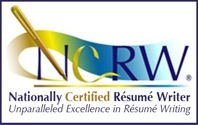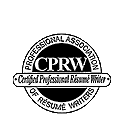10 Things to Do After the Job Interview
{Click here to read the original article on Next Avenue.}
Congrats. You had the job interview. Now, your work is done, right? Wrong.
In today’s hypercompetitive job market, effective follow-up after the interview is a must and failing to do it well might cause you to lose out to another candidate.
The line between being persistent and being a pain, however, is blurry at best. So to help you sort things out, I sent a query to my colleagues in the careers world — recruiters, career coaches, hiring managers and CEO’s — asking for their best follow-up advice.
I received more than 60 responses on topics ranging from thank you notes to handling rejection. Here’s a summary of their 10 best tips:
The Thank-You Note
On this point, everyone agreed: A thank-you note is a must. Most of the pros recommended you send one via email within 24 hours of the interview. Several suggested a handwritten card as a supplement when a personal or creative touch might be especially valued.
But if you really want to stand out, you need to do more than just say “thanks for your time.” The experts suggested these techniques to make your thank-you note shine:
Reference an article of interest. Include in the note a relevant article, link or book recommendation relating to a topic that was discussed during the interview. It’s a value-add for the interviewer and will reinforce your industry expertise.
To really make an impact, Jene Kapela, a South Florida-based leadership coach, says you should write a blog post on a topic discussed during the interview and then share the link to the post in your thank-you note.
Include supporting documentation that illustrates your ability to do the job. You don’t want to overwhelm the interviewer, but adding one or two carefully-curated examples of your work (non-confidential work samples, press mentions, etc.) can be a smart way to show off your expertise.
“It helps show you are the real deal,” says Tyson J. Spring, head of New Business & Strategy for Elever Professional, an Austin, Texas recruiting firm.
Provide a follow-up response to one of the key interview questions. Ever draw a blank or give a less than stellar response during a job interview? Use your note to modify, correct or amplify one of your responses.
Todd Cherches, CEO of BigBlueGumball, a New York City-based management consulting and coaching firm, offers this example:
When you asked me about my single greatest accomplishment in my last job, I apologize that I drew a blank. However, immediately after leaving, it hit me that I should have mentioned I was voted the top salesperson in my department for 2013, and proudly received a special recognition award at my company’s year-end national convention.
The Waiting Game
Anyone who has recently looked for a job knows that hiring decisions can drag on for months. To make that in-between-time work in your favor….
Follow instructions. If the recruiter or interviewer suggested contacting them by email, don’t call on the phone. And, says Lynne Sarikas, Director of the MBA Career Center at the D’Amore McKim School of Business at Northeastern University, “If they tell you it will take two weeks, wait the two weeks.”
If you forgot to ask about next steps during the interview, request clarification in your follow-up e-mail. Then follow the instructions you receive.
Don’t be a stalker. While you’re understandably anxious, that doesn’t give you license to pester the employer.
Debra Manente, Associate Director of Career Services at Post University in Waterbury, Conn., says you should call the recruiter or hiring manager to follow up at their recommended time (leave a message if you don’t reach them). But if you haven’t heard back after two calls, “take it as a sign to move on,” she says.
And speaking of stalking, most of the pros advised holding off on sending LinkedIn invitations to the people who interviewed you until after the hiring process has ended.
Immediately begin prepping for the next round of interviews. You never know when you’ll be asked to come in for a Round 2, so you’ll want to be good to go at a moment’s notice.
Joe Weinlick, Vice President of Marketing for the online job board network, Beyond.com, recommends that you “dig deep to find interesting pieces of information that most people can’t find on the company’s website. It could be about an award-winning project, a milestone in the company’s history or a recent initiative. If you take this information and casually work it into the conversation in a follow-up interview, it will leave a positive lasting impression and increase your chances of getting the job.”
Call in a favor. Have an influential contact who knows the hiring manager or recruiter you met with? Now might be the time to ask that person to lend a hand.
Maria Goldsholl, Chief Operating Officer of the Mom Corps staffing solutions agency, offers this advice: “Have an impressive reference reach out to the hiring manager or recruiter via LinkedIn to drop a note to praise you. The note could read: ‘Mary, I recently became aware that Josh was interviewing with your company for a position. I wanted to tell you that you would be very lucky to have someone like that on your team. His skills are sharp and he was one of the best employees I have ever had.’
Keep hope — while you keep looking. In today’s crazy job market, you never know when you might hear back about a position you’ve long forgotten about.
As Lisa M. Benson, Staffing Director at Mary Kraft Staffing & HR Solutions, points out, “Thanks to electronics, hiring managers do really keep resumes at their fingertips for a while when they like them. We hear stories of candidates being hired six months to a year after the initial submission of their resume, sometimes with very little contact in the interim!”
Of course, hope alone is not a job search strategy. So keep your search in high gear until you have an offer in hand.
If You Don’t Get the Job
Should you lose out for a position you interviewed for, accept rejection in a professional manner. Sure it hurts to hear “No.” But if you handle the rejection professionally, you might be considered for a future job at the same employer.
Carol Cochran, Director of Human Resources at FlexJobs, shared that in the last six months, she has returned to — and hired — five candidates she originally turned down. “They made a great impression in our first round of conversations and were graceful in their communications after I let them know we had chosen another applicant,” Cochran wrote to me.
Stay in touch. You never know when an employer might have another opening or will hear of an opening and recommend you, so remain in contact after losing out. You might use LinkedIn to send an article or to reach out with a helpful suggestion.
But Bruce Hurwitz, a New York City-based executive recruiter, career counselor and author, says: Don’t overdo it. “Once every few months is a good idea,” he notes.
Otherwise, you might be seen as a pest, and that’s no way to stand out among job candidates as one of the best.
Comments are closed.




